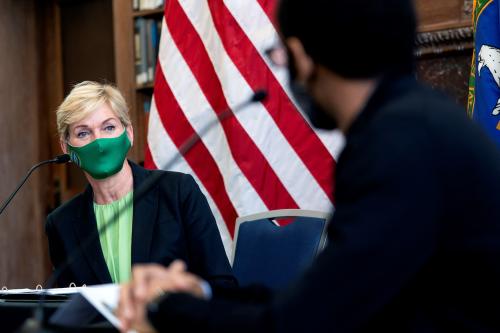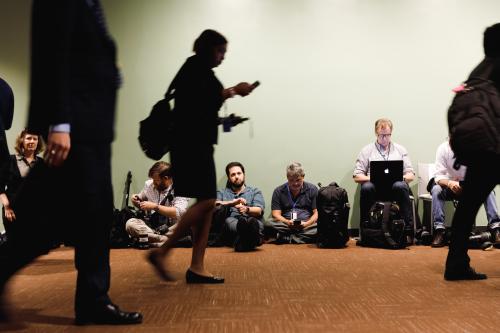Though Washington can’t seem to get enough of it, the debt and deficits fixation continues to feel pretty theatrical. Far scarier, by contrast, is the state of the economy. Notwithstanding some positive signs in the housing and construction sectors, the drifting economy remains troubled.
Real domestic product has been growing at tepid rates below 2 percent per year. Pay remains stagnant for most workers. And for that matter the number of poor and near-poor people in America has skyrocketed from 81 million in 2007 to 107 million in 2011—nearly one-third of the nation’s population.
In short, it’s time for Washington to return its attention to the economic emergency and commit itself to working on a bipartisan basis to jumpstart growth.
Where should it start? One obvious place for a new push to renew the economy is the manufacturing sector—that most critical site of high-tech innovation, exports, and well-paying jobs with strong multiplier effects.
Which is why today’s latest three installments of our ongoing Remaking Federalism | Rebuilding the Economy Series call for bold actions to bolster the competitiveness of the U.S. manufacturing and advanced industries sector.
What do we propose? The three ideas from Devashree Saha and one of the co-authors of this blog (Mark Muro), Bruce Katz and Peter Hamp, and Rob Atkinson and Stephen Ezell add up to cohesive trio of proposals for improving innovation, workforce, and higher-education connections in the sector.
On the innovation front, we argue that Congress should authorize the build-out of a national network of advanced industries (AI) innovation hubs, expanding on the modest beginnings now being made through the Department of Energy’s Energy Innovation Hubs program and the Department of Commerce’s National Network for Manufacturing Innovation (NNMI) initiative. Functioning as regional centers of excellence, the new hubs would focus on cross-cutting innovation, process, and technology deployment challenges of critical interest to advanced industries by drawing universities, community colleges, state and local governments, and other actors into strong, industry-led partnerships. The creation and appropriate funding of at least 25 such hubs—funded at $25 million a year each, with a significant local, state, and private sector matching support required—would, we believe, greatly accelerate the pace of innovation and new-product development in the nation’s advanced industries and so strengthen their long-term competitiveness.
Turning to labor force development, Katz and Hamp urge the federal government to initiate a “Race to the Shop” competition (loosely modeled on the successful Race to the Top education challenge) to push states and metropolitan areas to develop long-term strategies for better addressing the workforce and training needs of their leading sectors. Under this new program, the five states and five metropolitan areas that present the strongest plans would receive a federal implementation grant as well as increased flexibility to realign or better invest existing federal resources, say from the Workforce Investment Act or Perkins Career and Technical Education funding. Ultimately winning states and regions might receive significant resources and flexibility to create a network of manufacturing high schools, for instance, or to align community college curricula to fit the varying skill demands of major local industries.
Finally, to bolster both the innovative capacity and human capital of the manufacturing commons, Atkinson and Ezell call on Congress to establish an initiative to designate 20 institutions of higher education in America as “U.S. Manufacturing Universities,” with a special charge to strengthen the position of U.S. manufacturing in the competitive global economy. Along these lines, Atkinson and Ezell would have government provide the new cadre of federally-designated institutions $25 million a year each to revamp their engineering programs to better serve the needs of U.S. manufacturers. Through such changes U.S. regions and industries would gain more joint industry-university exchanges; more undergraduate and graduate training that incorporates work-based experience in manufacturing; and more universities focused on turning out engineering PhDs who go on to work in industry.
So there we are: Three new ideas for bolstering American manufacturing that would strengthen economic growth in U.S. regions and contribute to American renewal all at once.
In sum, it isn’t hard at all to think of useful policy moves that would help renew the American economy. What does seem hard, though, is getting Washington to focus on what matters, rather than what captivates. And unfortunately, that seems nearly impossible.
The Brookings Institution is committed to quality, independence, and impact.
We are supported by a diverse array of funders. In line with our values and policies, each Brookings publication represents the sole views of its author(s).



Commentary
Needed: Efforts to Manufacture a Recovery
January 14, 2013